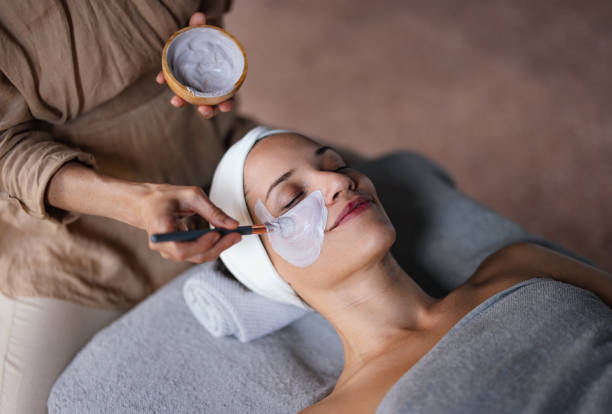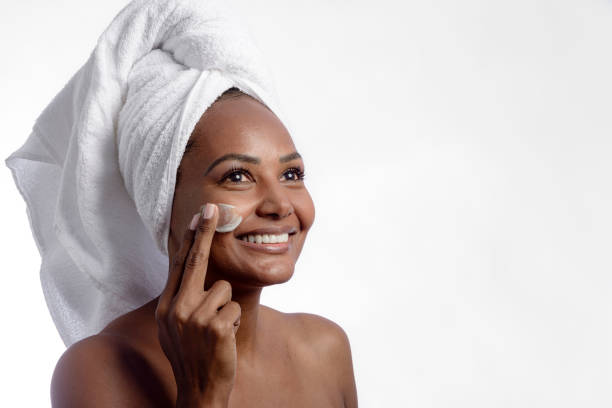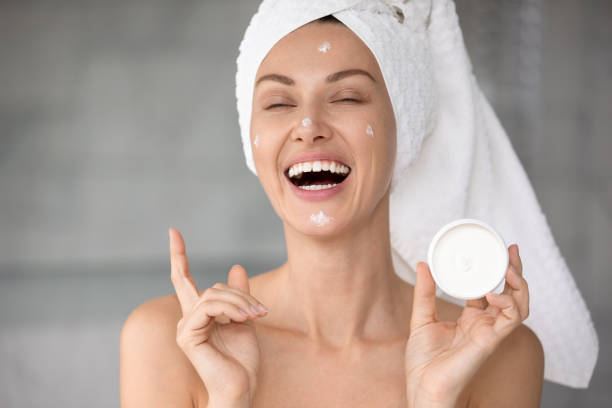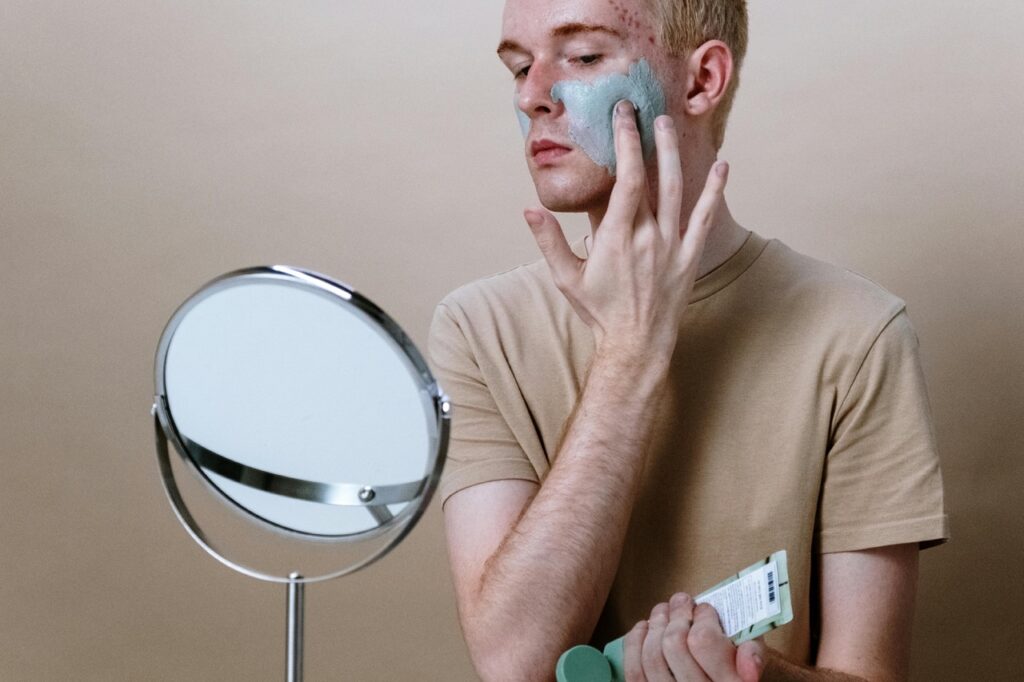Skin Care
How Often Can You Use A Clay Mask
Clay masks have been a popular skin-care therapy for millennia. They absorb excess oil, unclog pores, and leave the skin feeling smooth and invigorated. However, with so many various varieties of clay mask available, it can be difficult to determine how often to apply them.
The frequency with which you should use a clay mask varies according to your skin type and the mask you are using. According to skincare experts, persons with oily skin can use a clay mask twice or three times per week. However, if you have dry skin, you should only apply clay masks once a week. Combination skin types can use a clay mask to the oily regions of their face once a week. It is also crucial to monitor how your skin reacts to the mask.
Overuse of a clay mask can cause dryness and irritation, so adhere to the prescribed usage restrictions. Most skincare gurus advocate using a clay mask once or twice each week. However, some masks can be used up to three times per week. To establish the appropriate usage frequency, read the instructions on your mask’s label or packaging.

Understanding Clay Masks
Clay masks are an excellent and popular skincare solution that promotes overall skin health. They are made of various types of clay that are thought to absorb pollutants, oil, and debris from the skin, leaving it clearer, cleaner, and more youthful-looking. In this section, we will look at the various varieties of clay masks, their advantages to skin health, and how to determine your skin type.
Types of Clay Masks
Clay masks are available in a variety of styles, each with its own set of qualities and benefits. Some of the most common varieties of clay masks are:
- Kaolin Clay Mask: This clay mask is ideal for all skin types, particularly sensitive skin. It is a soft clay that soothes and reduces irritation.
- Bentonite Clay Mask: This clay mask is great for oily, acne-prone skin. It helps to absorb excess oil, clear clogged pores, and prevent outbreaks.
- French Green Clay Mask: This clay mask is mineral-rich and ideal for cleansing and purifying the skin. It is ideal for all skin types, particularly oily and acne-prone skin.
- Rhassoul Clay Mask: This clay mask is ideal for all skin types, particularly dry and sensitive skin. It hydrates the skin and improves its suppleness.
Benefits for Skin Health
Clay masks offer several benefits for skin health, including:
- Absorbing Impurities: Clay masks absorb pollutants, oil, and debris from the skin, leaving it clean and refreshed.
- Unclogging Pores: Clay masks can assist to clear your pores and prevent outbreaks.
- Hydrating the Skin: Some clay masks, such as Rhassoul clay, help to hydrate and improve the skin’s suppleness.
- Detoxifying and Purifying: Clay masks, such as French Green clay, aid in detoxification and purification, leaving the skin clean and invigorated.

Identifying Your Skin Type
Before applying a clay mask, you must first establish your skin type. Different clay masks are appropriate for various skin types. Here are some ideas to help you determine your skin type:
- Oily Skin: If your skin is glossy and prone to breakouts, you probably have oily skin.
- Dry Skin: If your skin is flaky and tight, you most likely have dry skin.
- Sensitive Skin: If your skin is easily irritated and prone to redness, you probably have sensitive skin.
- Combination Skin: If your skin is oily in the T-zone (forehead, nose, and chin) but dry on the cheeks, you probably have combination skin.
- Normal Skin: If your skin is balanced, you probably have normal skin.
In conclusion, clay masks are a fantastic addition to any skincare regimen. They provide various skin health benefits, including impurity absorption, pore unclogging, skin hydration, detoxification, and purification. You can reap the full benefits of clay masks by assessing your skin type and selecting the appropriate type.
Application Frequency and Best Practices
How Often to Use Clay Masks
Clay masks are a popular skincare treatment that can provide a variety of advantages, including exfoliating and cleaning the skin as well as decreasing acne and oiliness. However, clay masks must be used appropriately to avoid overdrying or irritating the skin.
The frequency of application is determined by your skin type and the substance you’re using. For sensitive skin, a clay mask should be used once a week. For oily or acne-prone skin, a clay mask can be used up to twice per week. However, when your skin responds, you should start softly and gradually increase your frequency of application.
Instructions for Use
To avoid harming your skin, use a clay mask exactly as directed. Here are some common recommendations when using a clay mask:
- Start with a clean face: Apply a light cleanser to your skin before applying the mask. This will allow the mask to enter deeper into your pores.
- Apply the mask evenly: Using a brush or your fingertips, spread the mask evenly throughout your face. Avoid the eye area and don’t apply too much pressure.
- Leave the mask on for the recommended time: Most clay masks should be left on for 10-15 minutes, but check the directions for your specific product.
- Rinse off with warm water: Rinse the mask off with warm water, being gentle with your skin. Avoid using hot water, as it can dry out your skin.

Aftercare and Skin Moisturization
To avoid dryness and irritation after applying a clay mask, hydrate your skin. Here are some suggestions for hydrating your skin after applying a clay mask:
- Hydrate: Drink plenty of water to replenish your skin’s moisture from within.
- Moisturize: After applying a clay mask, hydrate your skin with a light moisturizer. Look for a moisturizer made exclusively for your skin type.
- Exfoliate: Once a week, use a light exfoliator to exfoliate dead skin cells and maintain your skin looking healthy.
- Cleanse: Using a gentle cleanser, remove any remaining mask residue and maintain your skin clean and healthy.
Following these recommended practices will allow you to apply a clay mask as part of your skincare routine in a safe and effective manner. Remember to start carefully and gradually increase the frequency of application as your skin responds, and always moisturize after using a clay mask to maintain your skin healthy and hydrated.
Potential Skin Reactions and Precautions
When applying clay masks on our skin, we must exercise caution and notice symptoms of sensitivity. Although clay masks are generally safe to use, some people may have negative responses. Here are a few things to remember:
Recognizing Signs of Irritation
If you have sensitive skin, you should be aware of the indicators of irritation. These may include redness, irritation, and dryness. If you suffer any of these symptoms, it could indicate that the clay mask is too abrasive for your skin. In this scenario, you should stop using the product and try something softer.
If you have oily skin, you may be more likely to experience outbreaks and acne. Clay masks can help cleanse pores and prevent breakouts, but they should not be used excessively. Using a clay mask too regularly can cause your skin to produce more oil, resulting in additional outbreaks. Depending on your skin type, using a clay mask once or twice a week is ideal.

Adapting to Skin Changes Over Time
Our skin changes as we get older, making it more prone to wrinkles and other aging indications. If you have acne scars or wrinkles, you may want to use a clay mask more frequently to improve the appearance of your skin. However, exercise caution and avoid overdoing it. Using a clay mask too frequently might result in dryness and irritation, making wrinkles and acne scars more visible.
In general, start with a once-weekly clay mask and monitor how your skin reacts. If you feel discomfort or redness, reduce the frequency to once every two weeks or once a month. As your skin grows accustomed to using clay masks, you may be able to increase the frequency with which you use them.
By being aware of the potential skin reactions and taking care, we may safely enjoy the benefits of clay masks without inflicting skin damage.
Conclusion
Unveiling the secrets of clay masks has been a revelation, with their innate ability to draw out impurities, absorb excess oil, and revitalize the complexion. The delicate balance between their purifying properties and the need to nurture the skin has become a focal point in my quest for a skincare regimen that aligns with my skin’s unique needs.
Understanding that the efficacy of clay masks hinges on their ability to deep-cleanse without stripping the skin’s essential moisture has transformed the way I perceive these skincare gems. The frequency of use, I’ve learned, is a delicate dance between reaping the benefits and avoiding potential drawbacks.
Navigating the realms of skin types and individual sensitivities has allowed me to tailor the application of clay masks to my skin’s specific requirements. Whether it’s oily skin craving a weekly detox or a more sensitive complexion opting for a gentler bi-weekly indulgence, the adaptability of clay masks to diverse skincare needs is truly remarkable.
The realization that moderation is key when incorporating clay masks into my skincare routine has been an essential takeaway. Overindulgence, I’ve come to understand, can tip the balance and lead to unintended consequences. Striking that delicate equilibrium between self-care and skincare has become the cornerstone of my approach.


